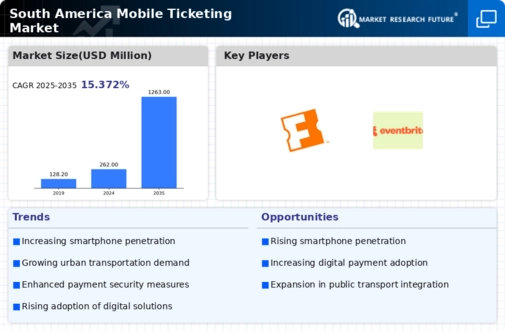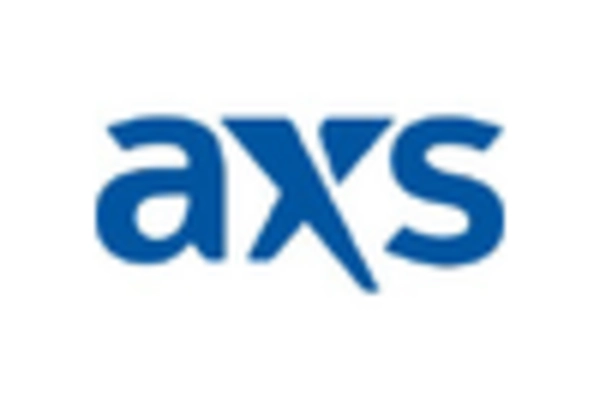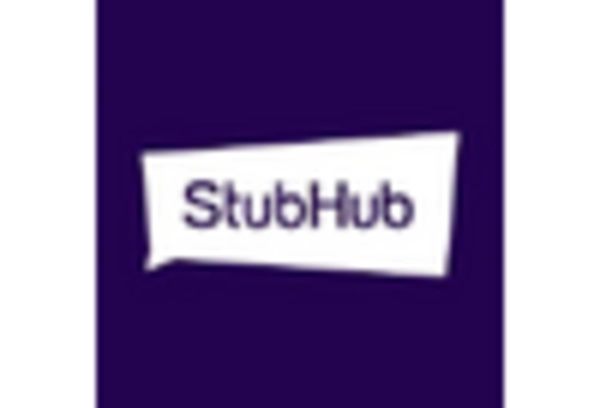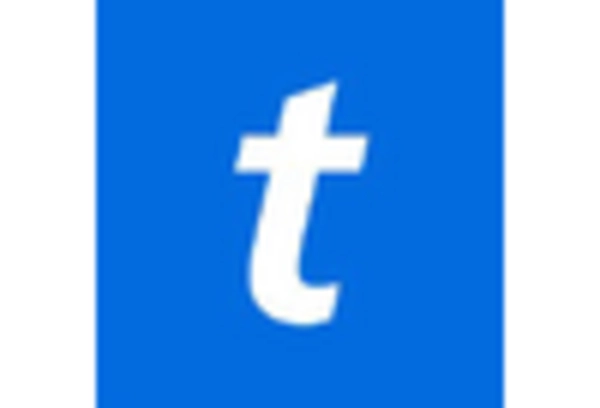Rising Smartphone Penetration
The mobile ticketing market in South America is experiencing a notable surge due to the increasing penetration of smartphones. As of 2025, smartphone adoption in the region has reached approximately 80%, facilitating easier access to mobile applications for ticket purchasing. This trend is particularly pronounced among younger demographics, who are more inclined to utilize mobile solutions for various services, including ticketing. The convenience offered by mobile ticketing applications aligns with the lifestyle preferences of these users, thereby driving market growth. Furthermore, the proliferation of affordable smartphones has made it feasible for a broader audience to engage with mobile ticketing platforms. This rising smartphone penetration is likely to continue influencing the mobile ticketing market, as more consumers opt for digital solutions over traditional ticketing methods.
Expansion of Public Transportation Systems
The expansion of public transportation systems across South America is a critical driver for the mobile ticketing market. Many cities are investing in modernizing their transit infrastructure, which includes the implementation of mobile ticketing solutions to streamline operations and enhance user experience. For example, cities like Sao Paulo and Buenos Aires are integrating mobile ticketing options into their public transport networks, allowing users to purchase tickets via mobile apps. This integration not only improves convenience for commuters but also reduces the need for physical ticketing infrastructure. As public transportation systems continue to expand, the mobile ticketing market is likely to see increased adoption, with projections indicating a potential market size of $1 billion by 2027.
Government Support for Digital Initiatives
Government initiatives aimed at promoting digital transformation are significantly impacting the mobile ticketing market in South America. Various countries in the region have launched programs to enhance digital infrastructure, which includes improving internet connectivity and supporting mobile payment systems. For instance, investments in 4G and 5G networks are expected to increase internet accessibility, thereby facilitating the use of mobile ticketing applications. Additionally, government policies that encourage cashless transactions are likely to bolster the adoption of mobile ticketing solutions. As a result, the mobile ticketing market is projected to grow, with estimates suggesting a compound annual growth rate (CAGR) of around 15% over the next five years, driven by these supportive measures.
Growing Consumer Preference for Convenience
Consumer preferences in South America are shifting towards convenience, which is significantly influencing the mobile ticketing market. As lifestyles become increasingly fast-paced, individuals are seeking solutions that save time and effort. Mobile ticketing applications offer a seamless experience, allowing users to purchase, store, and manage tickets directly from their smartphones. This trend is particularly evident in sectors such as entertainment and travel, where consumers favor the ease of mobile transactions over traditional methods. The mobile ticketing market is responding to this demand, with many service providers enhancing their platforms to offer user-friendly interfaces and additional features. This growing consumer preference for convenience is expected to drive market growth, with an anticipated increase in user engagement and transaction volumes.
Increased Focus on Security and Fraud Prevention
Security concerns are paramount in the mobile ticketing market, particularly in South America, where fraud can pose significant challenges. As mobile ticketing solutions gain traction, there is an increased focus on implementing robust security measures to protect user data and transactions. Companies are investing in advanced encryption technologies and biometric authentication methods to enhance security. This focus on security not only builds consumer trust but also encourages wider adoption of mobile ticketing solutions. As a result, the mobile ticketing market is likely to benefit from these advancements, with a projected increase in user confidence leading to higher transaction volumes. The emphasis on security and fraud prevention is thus a crucial driver for the continued growth of the mobile ticketing market.


















Leave a Comment